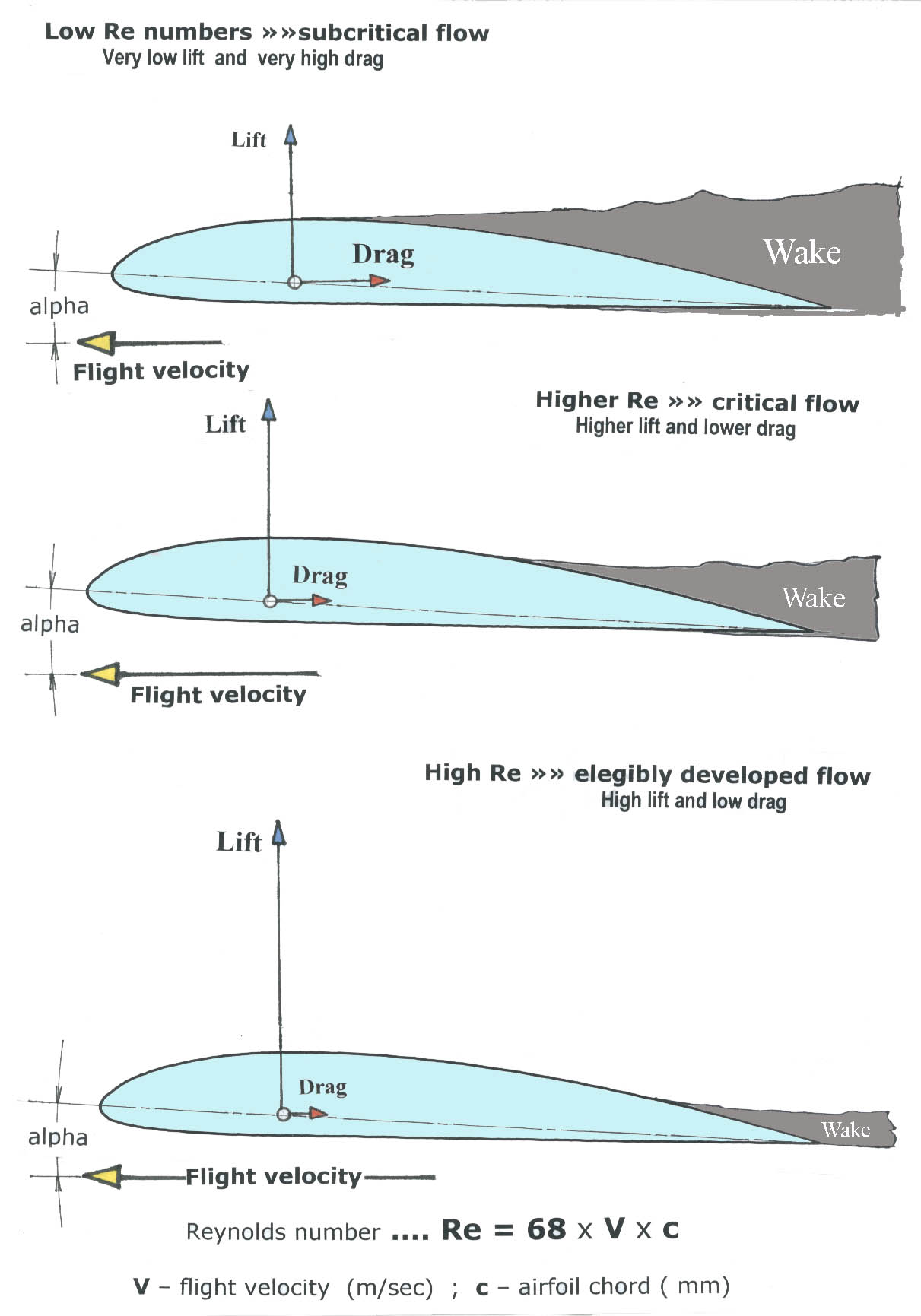


Most of what I am doing is based on gut feeling and my own thoughts. A side benefit has been the stiffness given to the very thin materials by curving the wing. In other words, I'm aiming for lower weight without a cost in other factors. The reason I am persisting in under-cambered experiments is to try to create a design without too much lift/drag, using very thin materials. So from that I conclude that in gliding (very different conclusions if power is continuously available), for a given thickness, undercamber produces more lift than you need, at a cost in drag & speed. The under-surface (in glide phase) will be at X degrees to the oncoming air, so the design of the top surface should be intended to FILL the right space to prevent low pressure (but without using too much material ie weight). With Bernouli out the window, top profile is all about reducing drag. They do, however, continue to lift at lower speeds, but I think the stall will come suddenly. In un-powered flight, thus a loss of speed. Under-camber can increase lift, but at the cost of increased drag. In design (as in performance), of course, these inter-relate. Therefore, there are 3 factors: speed, weight and drag. Opinions on glide angle vary - I've read 5 degrees, or 18 degrees. I've done some thinking and reading in the 2 years since then, and concluded īernouli effect is insignificant (or nearly so) for gliders. It was my second ever glider, after a Thermal Scout. It would be interesting to compare a conventional wing (from 1/4" sheet) with a thinner undercambered wing of the same camber (say from 1/8" sheet) on models of the same weight. It took a little longer to make - carved from 1/4" sheet as usual, but was a little lighter - I had taken the material away from the bottom of the wing. But it's no better than it's flat bottomed brethren. I built this model in 1978, and I still have it it has always been a fine flying model, and it gets just as high as it's flat bottomed brethren (HLG). I've done this to a modest extent - a 24" by 4" wing with about 40 thou of undercamber in the centre washing out to zero at the tip. I assume, George, that you're trying a little undercamber on what would normally be a (conventional) flat bottomed wing. Comparing low ceiling indoor models to outdoor HLG's is like comparing banana's to grapes - true they're both fruit, but that's about it. We should resolve some mis-understanding/ mis-conceptions here. There are a numer of influences to consider here.ġ) Easier to build by carving from solid sheet (I think that's a big influence) Thats my 10 cents, now whats everyone elses findings? I would love to hear of your findings though. My own experience was not good as I needed more wash in than was really necessary and also, if I needed to wash out an undercambered trailing edge, it became a nightmare. So, its well suited if you can fly indoors. The indoor airplanes do not have the benefit of being able to ride large currents of what can be fast moving air as outside, therefore, they need to slow things down as much as possible and with the under camber, fly nearer the stall than most hlgs. However, there has to be a "But" does there not? Indoor hlgs employ undercambered wings in the way that this is induced when the initial speed of the climb has been bled off (Coot) and the wing goes from a flat bottom airfoil to an undercamber quickly. Undercambered wings will make it glide slower, however, the drag on the climb will reduce altitude gained substantially. A thermal can increase in speed in its core and I believe that a flat bottom section will handle this a lot better. The advantage of a flat bottom wing is that there is a lot less drag and as a consequence, the reduced drag = height and speed and faster transition and is also easier to trim. These airplanes of ours fly fast, that there is no doubt and are designed to core in a thermal quickly.
#Undercambered airfoil free
A hlg (outdoor) flies fast (climb)and a lot faster than most of the airplanes in free flight - in gliding mode that is. The reasons that we dont fly undercambered wings are due to speed in flight and in the launch. Good evening guys and heres my 10 cents worth for you.


 0 kommentar(er)
0 kommentar(er)
